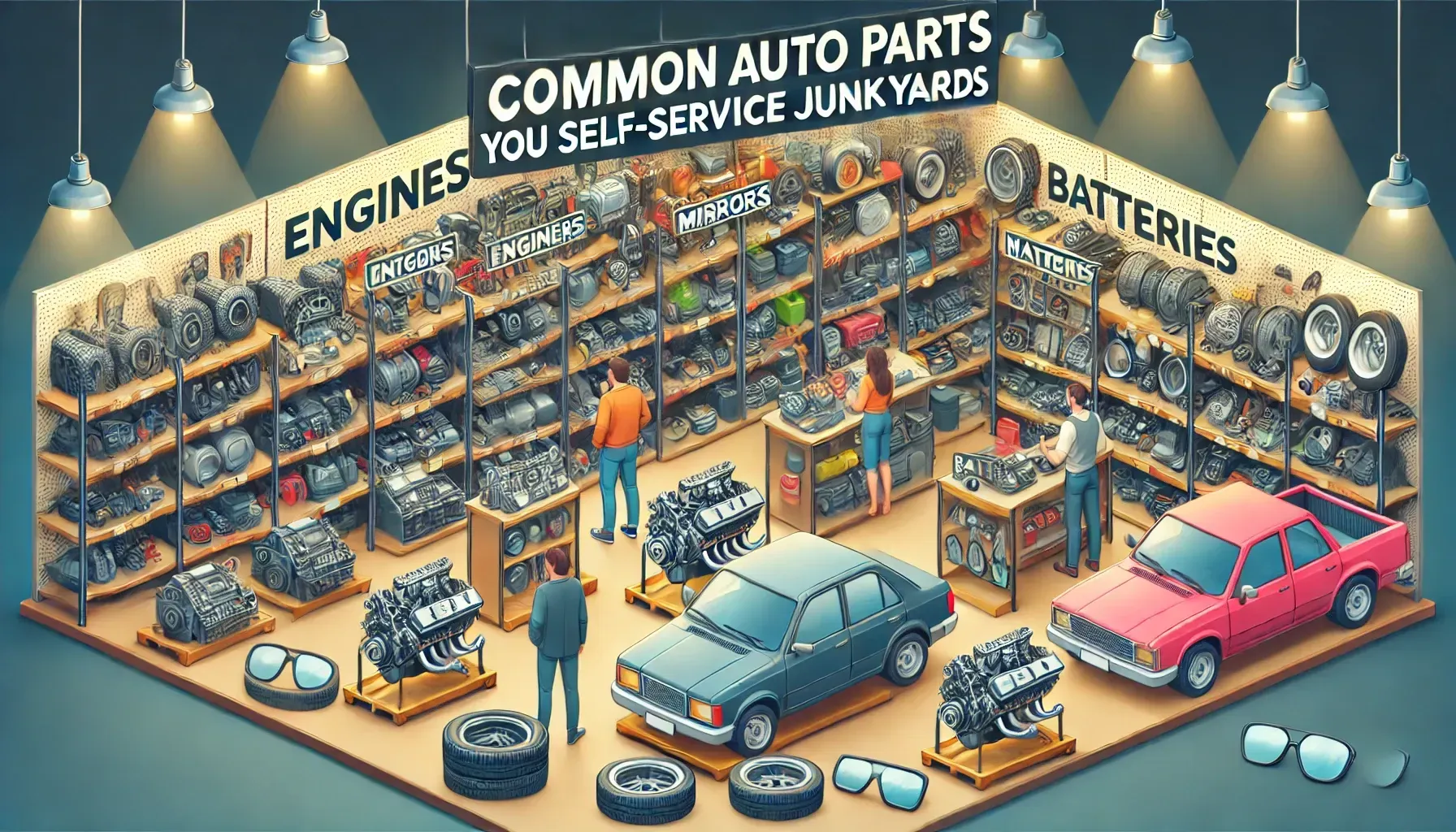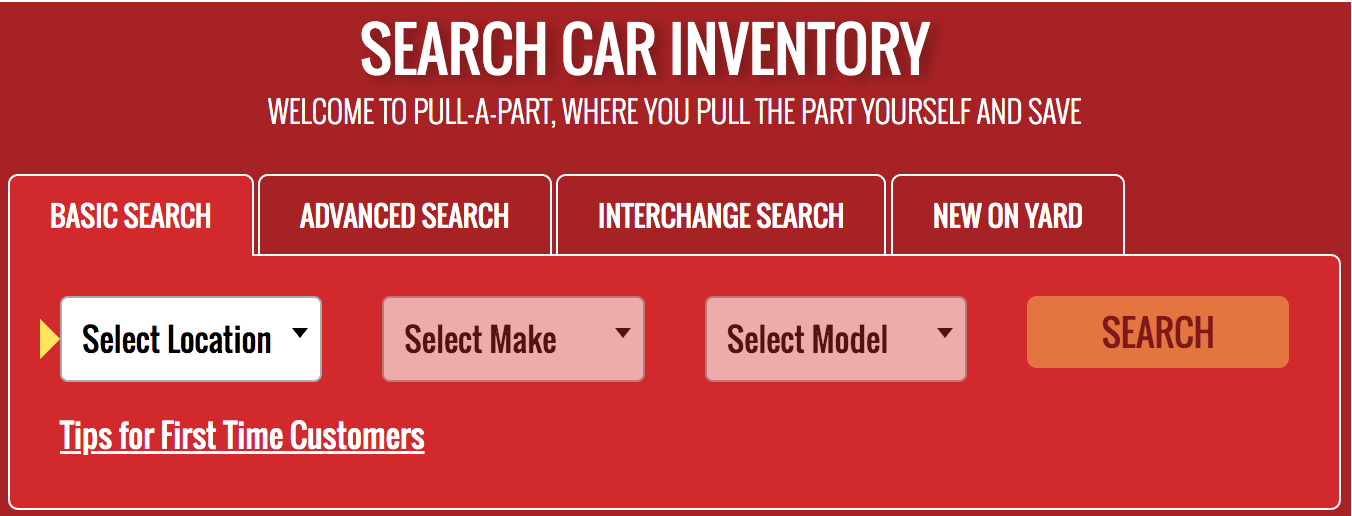Pulling Auto Parts 101: Safety Tips for First-Time Visitors
Find a Local Junkyard
ALABAMA
ARIZONA
COLORADO
FLORIDA
GEORGIA
INDIANA
KENTUCKY
LOUISIANA
MISSISSIPPI
NEW MEXICO
NORTH CAROLINA
OHIO
PENNSYLVANIA
SOUTH CAROLINA
TENNESSEE
TEXAS
Are you ready to discover the hidden gems of the auto world without breaking the bank? Welcome to Pulling Auto Parts 101: your chance to explore a treasure trove of affordable components, perfect for first-time junkyard visitors and DIY enthusiasts alike. From rare finds to everyday essentials, salvage yards offer countless possibilities—yet diving in headfirst without proper precautions can lead to unwanted mishaps. That’s why this post is all about introducing you to the thrill of rummaging through car models, while assuring you stay safe and confident from start to finish. By following the simple tips provided, you’ll navigate potential hazards like a pro and master the art of locating your ideal part. Get ready to save money, learn valuable skills, and have fun along the way!
Summary
This blog post offers step-by-step instructions, insider tips, and direct safety strategies, ensuring an easier, safer, and more successful junkyard experience.
- • Anchor your strategy around a clear, long-term vision for ultimate alignment
• Use incremental milestones to ensure consistent progress and focused resource allocation
• Balance risk and innovation to uncover new opportunities and stay competitive
• Leverage data-driven experimentation to make informed, agile decisions
• Continuously refine processes through regular assessment, feedback, and collaboration
Essential Gear & Protective Clothing: Setting Yourself Up for Junkyard Success
Proper protective gear isn’t just a nice-to-have in a junkyard environment—it’s the cornerstone of a safe and successful trip. One of the first essentials is sturdy, closed-toed footwear with slip-resistant soles to protect against sharp metal scraps, uneven ground, or stray nails. Gloves come next, serving as your hands’ first line of defense against cuts, scrapes, and chemical exposure. Beyond that, a reliable pair of safety goggles keeps your eyes shielded from loose debris, dust, and stray bits of rusted metal. These items might sound basic, but they’re often overlooked, especially by first-time visitors who may underestimate the potential risks in a cluttered yard. By making protective clothing a non-negotiable priority, you lay the foundation for a smooth, worry-free salvage experience. Of course, it’s not just about what you wear—how you equip yourself in terms of tools and accessories also matters. A high-quality toolkit, stocked with the right wrenches, screwdrivers, and pliers, can make a world of difference when removing or disassembling car parts. When crossing aisles loaded with long-forgotten vehicles, you want tools that won’t snap under pressure or strip important bolts. A trusty flashlight can also be a game-changer, ensuring you don’t miss any small but crucial components hidden in dark corners. Meanwhile, packing extra rags or absorbent material helps you quickly clean off any unexpected grease or fluid spills, reducing hazards and keeping you nimble as you move from one vehicle to the next. For newcomers, it’s wise to invest in gear that’s durable but not necessarily the most expensive on the market—just be sure it meets essential safety standards. Steel-toe boots, for instance, provide ample protection without breaking the bank, and gloves reinforced with cut-resistant fabric offer reassurance when you’re leaning into a car’s hood. If you want a bit more shielding for your clothes, consider a sturdy work apron or coveralls that can handle dirt and jagged edges. Simple add-ons like knee pads can spare you aches later, especially if you’re planning a thorough parts hunt. Making these practical decisions before stepping foot in the salvage yard helps ensure you’re prepared for the unexpected, so you can focus on the thrill of discovering hidden automotive treasures.
Navigating Junkyard Hazards: Staying One Step Ahead of Hidden Dangers
In shaping your strategic approach, it’s crucial to recognize that an effective framework begins with a clear vision of your long-term objectives. By understanding where you want to be in the future, you can create incremental milestones that ensure every step you take contributes to a larger end goal. This clarity fosters focus and alignment, ultimately preventing common pitfalls such as diluted strategies or fragmented efforts. A strong vision allows you to differentiate between short-term tactics and sustainable measures, ensuring that your resources are deployed effectively. For instance, if your aim is to significantly boost brand visibility, every team member should clearly understand this priority to stay coordinated and consistent. Another key insight lies in balancing risk and innovation. Pursuing fresh concepts or products may feel uncertain, yet measured experimentation can unearth untapped opportunities when guided by data and feedback. Start by identifying a manageable area in which to test new ideas—perhaps a pilot program or a limited product release—so you can quickly gather insights and adjust as needed. This approach blends the best of both worlds: calculated risk-taking that fosters creativity and a data-driven process to validate outcomes. Whether you’re introducing a new service offering or rebranding a product line, harness the power of informed decision-making to stay flexible. This principle not only boosts organizational agility, but it also helps maintain momentum by keeping your team motivated and engaged, ready to tackle unforeseen challenges. Finally, never underestimate the value of revisiting and refining your core processes. By regularly assessing performance metrics, soliciting feedback, and tweaking your methods, you ensure continuous improvement. It’s better to identify and resolve small issues early than to wait until they escalate into major setbacks. Emphasize transparency so that stakeholders remain informed, understand any updates or shifts in direction, and can offer valuable input. This culture of openness and adaptability serves as the foundation for meaningful progress, enabling you to fine-tune your strategies while fostering true collaboration.
Smart Strategies for Pulling Parts: Maximizing Efficiency and Minimizing Risks
One of the most effective ways to locate the part you need is to plan ahead. Start by doing some research on reputable online parts databases or referencing your vehicle’s manual, so you know precisely which components will fit. Look up which cars match your model’s make, year, and trim level, as many vehicles share compatible parts. Once on-site, confirm the VIN or part numbers to avoid grabbing the wrong piece. When you locate your target, examine its condition thoroughly—looking for signs of water damage, rust, or other pitfalls that could compromise performance in the long run. If possible, bring along any old or damaged parts you’re replacing so you can compare them directly and avoid reliance on guesswork or memory alone. Before you dive in with wrenches and screwdrivers, create a mental roadmap of how you’ll remove each piece. This foresight can save you from accidentally disconnecting something crucial that could jeopardize the part’s integrity. Consider taking photos every step of the way with your phone—these quick snapshots act as a handy reference when reassembling. Be mindful of fragile connections like wiring harnesses and plastic clips, which can break easily if rushed. If the piece seems particularly tricky, don’t hesitate to ask a staff member or an experienced fellow visitor for guidance. Finally, once removed, store the part securely to prevent damage in transit. With these step-by-step strategies, you’ll leave the junkyard confident that you’ve acquired safe, reliable, and cost-effective parts for your ride.
Aftercare and Cleanup: Wrapping Up Your Visit Responsibly and Safely
One aspect often overlooked is the importance of thoroughly cleaning your new finds before installing them. Old grease, dirt, and leftover fluids can hamper performance and create safety hazards. By wiping away debris, you can spot potential cracks or rust that might have been hidden amid the junkyard’s chaos. A quick rinse with water or a safe automotive cleaner is a small yet crucial step, especially for sensitive components like sensors or electrical connectors. Ensuring that your part is in optimal condition from the outset can save you plenty of time and frustration later on. Properly disposing of hazardous materials is also critical for both personal safety and environmental responsibility. Many automotive parts still contain lingering fluids such as engine oil, brake fluid, or refrigerant. Check your local regulations or the junkyard’s guidelines for lawful disposal or recycling options. By taking the right precautions, you not only protect yourself but also help maintain a positive community reputation for DIY junkyard strategies. Lastly, secure your recovered parts and tools before leaving the yard to prevent damage during transit. Consider using labeled ziplock bags for small components and strapping larger items in place. This simple step ensures your newly salvaged treasures make it home in prime condition and ready for the next phase of their journey.
Take the next step now: contact our team to turn these insights into achievements.
Exploring junkyards for auto parts can be an eye-opening experience, and when approached with proper preparation and caution, it becomes immensely rewarding. Throughout this post, we’ve highlighted essential gear to keep you safe, common hazards to watch out for, smart tactics for pulling components, and how to handle aftercare responsibly. Equipped with these insights, you’re far more likely to find quality parts at a fraction of retail pricing—while avoiding common pitfalls and unnecessary risks. Ultimately, knowledge is your greatest asset, turning what might initially appear as a cluttered lot of old cars into a place of opportunity. By committing to consistent safety habits, embracing practical strategies, and caring for your salvaged parts properly, you’ll leave each junkyard trip feeling more confident, ready to tackle repairs at home, and eager to continue your DIY auto journey.




